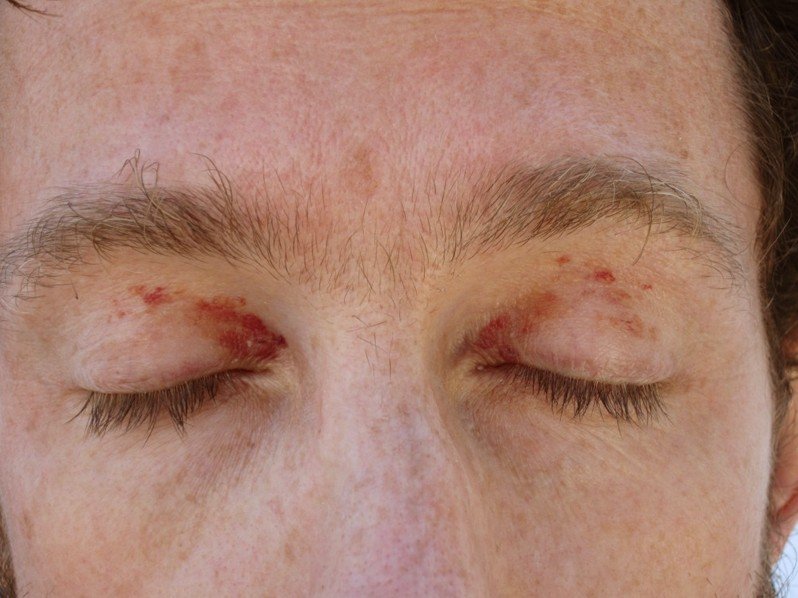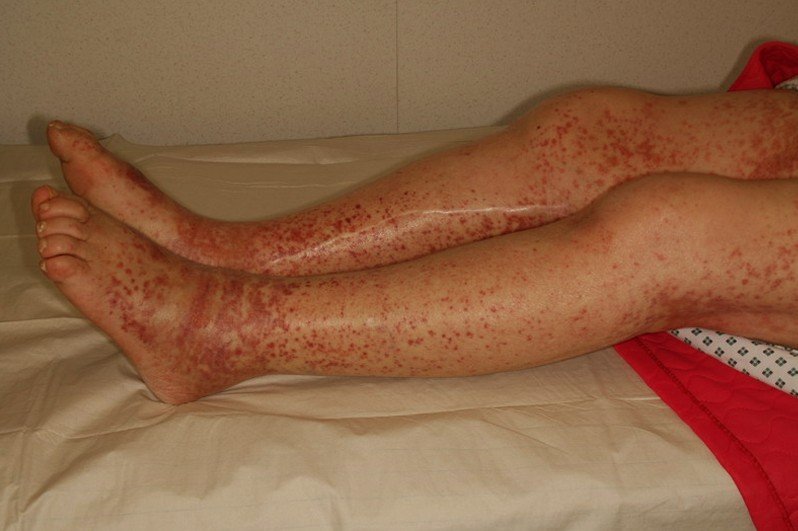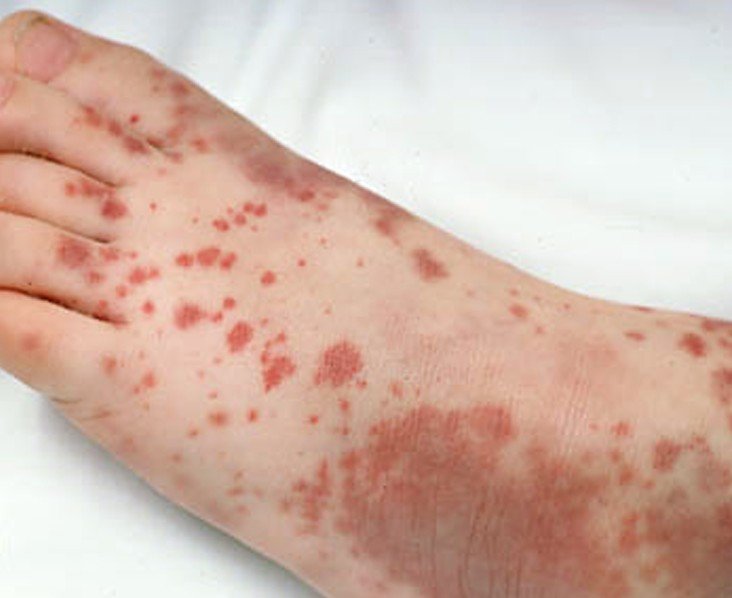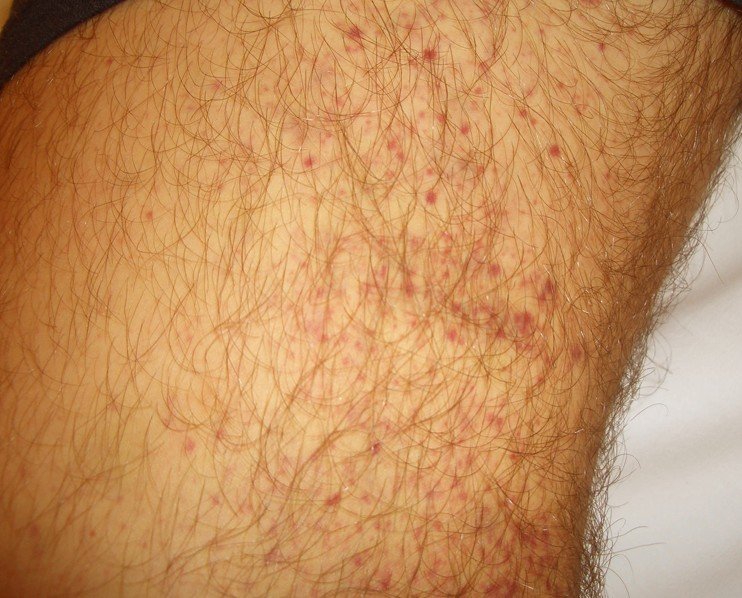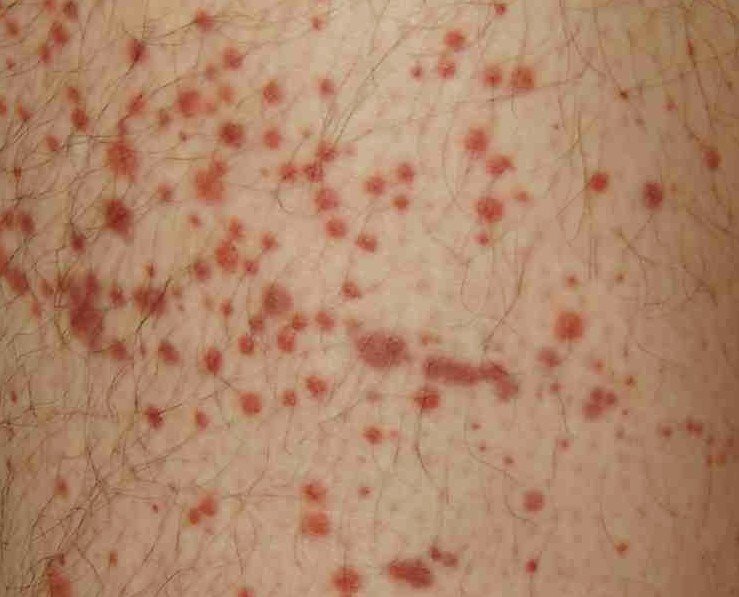Purpura
Last reviewed by Dr. Raj MD on January 12th, 2022.
What is Purpura?
This is a medical condition in which a person has spots that are bruise-like and purple or red in color appear inside their mouth, on their skin, or even on their organs. When a person has this medical condition the spots can be rash-like and small or large and look like bruises.
They can measure in size from zero point three to one centimeter in size. It comes from the Latin word purpura which means purple. When you apply pressure to these areas they do not blanch. When the spots are large they are called ecchymoses and if they are small they are called petechiae.
Purpura Types
There are two different types of purpura that are defined by their platelet counts. Platelets are the tiny molecules in your blood and are what help your blood clot. The two types are:
- Non-thrombocytopenic purpura – with this type a person may have platelet counts that are normal.
- Thrombocytopenic purpura – with this type a person may have platelet counts that are low. This is the type that is usually seen in children between the ages of two and six but can be seen at any age.
Another type of purpura is:
- Allergic purpura – with this type purpura will develop suddenly.
There are also two different cases of purpura, which are:
- Acute – these cases last less than six months and are considered short term cases.
- Chronic – these cases will last longer than six months.
Purpura Symptoms
The most noticeable sign is the skin color change. Usually the rash that appears will be on the back of your upper legs or buttocks. You may also start to develop lesions. In some cases of purpura the rash may be more noticeable and darker where there is pressure such as on your ankles near your sock lines or on your waistline where you wear a belt. The reason that it is more common to see a rash on the lower part of your body is that the blood that is leaking out of your arteries falls downward.
In addition to the spots there are symptoms that can affect many different areas of your body. Some of these other symptoms can include:
- Having the same spots on their gums and inside their mouth.
- Being prone to nosebleeds
- Having dramatic bleeding when you visit your dentist to have dental work done.
- Having more difficult and heavier menstrual cycle than normal.
- Having hives or a rash if you have allergic purpura.
- Sharp abdominal pain which can intensify during a women’s menstrual cycle.
- Blood in the stool
- Nausea that can lead to vomiting.
- Pain in the joints, especially the ankles and knees.
- Painful urination and blood mixing with the urine if a person has kidney problems with purpura.
Purpura Causes
What the cause is for a person to have this medical condition depends on what type they were diagnosed with. On a basic level the main cause is having a faulty autoimmune response by your body. Normally when your immune system is working right it will attack intruding viruses to help prevent you from becoming sick. With purpura your immune system starts to destroy your platelets like it would the intruding cells. When your platelets are attacked the natural ability of your blood to clot decreases and causes leaks to form in your blood vessels under your skin or when your small blood vessels come together.
Purpura could also be caused by a minor trauma to your skin that causes your to have some hemorrhaging under the surface of your skin. When this is the cause you have simply caused damage to your capillary blood vessels. You could also cause it from the exertion of violent coughing or vomiting, especially if appears on your upper chest or facial area. It could also be the result of a serious medical condition such as leukemia.
Non-thrombocytopenic purpura
- Medical conditions that cause you blood to not clot right.
- Congenital cytomegalovirus
- Amyloidosis
- Congenital rubella syndrome
- Medication that affect the function of your platelets.
- Blood vessels that are fragle called senile purpura.
- Hemagioma
- Inflammation of your blood vessels like Henoch-Schonien purpura. This type causes a type of this medical condition to be raised.
- Any changes in pressure that happen while having a baby vaginally.
- Scurvy
- A prolonged usage of steroid medications.
Thrombocytopenic purpura
- Blood thinning medications that can prevent your platelets not forming right.
- Idiopathic thrombocytopenic purpura (ITP).
- Meningococcemia
- Immune neonatal thrombocytopenia, which can happen in babies born to mothers have ITP.
Purpura Treatment
Normally having purpura is not a life-threatening condition but if you have bleeding in the brain that is the result of blood vessels that are leaking it can be deadly but this happening is very rare. Most of the time purpura will go away on their own within a few weeks or months. In severe cases the physician will usually prescribe medication or perform surgery to regulate it.
The medication that a physician may prescribe would be a corticosteroid to help lower the activities of your immune system to help increase your platelet count. The medication most prescribed is prednisone and it is usually taken for four to six weeks. If you have this medical condition you can live with it comfortable for decades.
When a person does need treatment it is because their platelet count is below a healthy level which is between one hundred forty thousand and one hundred fifty thousand units per micro liter.
Purpura rash
The rash that is associated with purpura is sometimes referred to as either skin hemorrhages or blood spots. You will find them all over your skin in various parts of your body but mostly in your arms and lower legs.
They are usually smalls dots that tend to blister and are reddish-purple in color. One way to tell if you have purpura is to apply pressure to the rash and if does not turn white, or blanch, you most likely have purpura but to know for sure you will need to see your physician.
